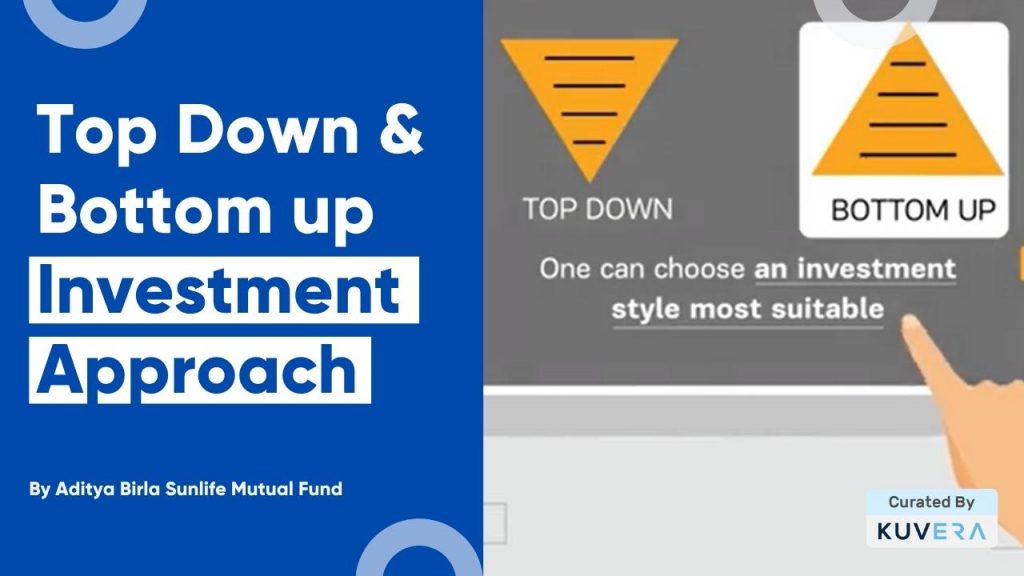Using various investment analysis strategies is one of the keys to successfully managing your investment portfolio. Investment analysis is a method of determining the future performance of an asset by evaluating various types of assets and securities, industries, trends, and sectors. This will allow you to determine how well it will fit into your investment objectives. Top-down and bottom-up investing are two of these strategies.
Top-down investing considers large-picture economic factors when making investment decisions. In contrast, bottom-up investing considers company-specific fundamentals such as financials, supply and demand, and the types of goods and services a company offers. While both methodologies have advantages, they both have the same goal: to find great stocks. Here’s a rundown of both the two top-down and bottom-up approaches!
Top-down investment approach
Top-down investing looks at how the overall economy and macroeconomic factors influence markets and stock prices. They will also examine the performance of various sectors or industries. These investors believe that if a sector is performing well, the stocks in that sector will likely perform well.
Top-down investment analysis includes:
- Global economic growth or GDP (gross domestic product).
- The monetary policy provides interest rate cuts and increases.
- Commodity pricing and inflation
- Bond yields and prices
Wealth managers use this analysis to identify asset classes, sectors, and markets that they believe will outperform the market over the forecast period. The top-down approach benefits wealth managers pursuing a tactical asset allocation strategy rather than focusing on individual security selections.
Bottom-up investment approach
When using the bottom-up investing approach, a financial manager will look at stock fundamentals regardless of market trends. They will pay less attention to market conditions, macroeconomic indicators, and business fundamentals. Instead, the bottom-up approach focuses on how a single company in a sector performs compared to other companies.
Bottom-up analysis focus covers:
- Financial ratios such as the price-to-earnings (P/E), current ratio, return on equity, and net profit margin is examples of bottom-up analysis.
- Earnings growth, including future earnings expectations
- Increased revenue and sales
- Financial examination of a company’s financial statements includes the balance sheet, income statement, and cash flow statement.
- Cash flow and free cash flow indicate how well a company generates cash and can fund its operations without incurring additional debt.
- The company’s management team’s leadership and performance
- Products, market dominance, and market share of a company
Which approach is best for you?
It is critical to emphasise that there is no single formula for investing success.
You will not be able to completely avoid risk no matter what strategy you choose, how much research you conduct, or how many factors you examine. You can control how much risk you’re willing to take and why.
That is why investing strategies like bottom-up and top-down investing exist. Neither strategy is perfect or superior to the other, but they can be used in different situations.
Who is Top-Down Investing intended for?
Exchange-traded fund managers typically prefer top-down investing because they have the resources to conduct extensive macroeconomic analysis and want to maximise their long-term returns.
As a result, investing in an ETF effectively uses the top-down approach to investing. This makes it ideal for first-time investors who want to play it safe and build a diversified portfolio of assets across industries while also prioritising long-term returns.
Who is Bottom-down Investing intended for?
Because the bottom-up approach is primarily concerned with short-term or real-world data, it is best suited for short-term, profit-driven investments, making it a favourite of experienced individual investors.
However, as the financial metrics, this approach analyses change regularly, the bottom-up approach requires investors to act quickly.
Bottom-up investing is for you if you’ve already tried the top-down approach, built a diversified portfolio, and gained some understanding of how markets work. As such, it could be an excellent way to introduce more risk and, potentially, more return into your portfolio.
Which method of investing will be more profitable for you: top-down or bottom-up?
After delving into both investment strategies, which strategy will make you more money? Would you still figure out the difference between top-down and bottom-up? The short and somewhat surprising answer is both!
Even though the top-down vs bottom-up investing debate is frequently heated, the truth is that both methods can be an extension of the same investment strategy.
It is not uncommon for investors to employ both strategies. Some people build their portfolios from the top down, accumulating diverse, safe assets before diving into more niche investment opportunities from the bottom up. Others go through the same procedure backwards.
Ultimately, it is entirely up to you which path you choose, as long as you make well-informed and research-backed investment decisions.
Key Takeaways
- The top-down approach is easier for beginner investors and those who do not have the time to analyse a company’s financials.
- Bottom-up investing can assist investors in selecting high-quality stocks that outperform the market even during downturns.
- There is no right or wrong method of investment analysis; which one you choose is determined by your objectives, risk tolerance, and level of comfort.
Interested in how we think about the markets?
Read more: Zen And The Art Of Investing
Watch/hear on YouTube:
<
Start investing through a platform that brings goal planning and investing to your fingertips. Visit Kuvera.in to discover Direct Plans and Fixed Deposits and start investing today.
#MutualFundSahiHai #KuveraSabseSahiHai!

